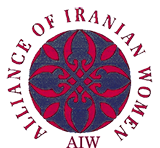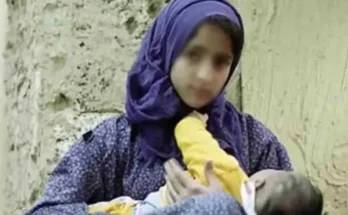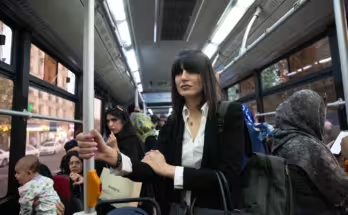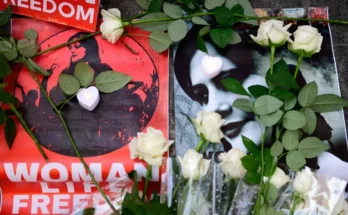On 28 October, Iranian state news agencies reported that Geravand had died after spending 28 days in a coma in the intensive care unit of Tehran’s Fajr Hospital.
According to various reports, Geravand had no “vital signs” from the moment she was admitted to the hospital and remained in a coma throughout her stay. In her final days in hospital, doctors had lost hope of her recovery.
Geravand died following an encounter with regime agents over violating the country’s hijab law as she was entering a subway car at Meydan-E Shohada, or Martyrs’ Square, Metro station in southern Tehran on October 1. Khomeinist regime officials deny that Geravand, who was pronounced brain dead after falling into a coma on October 1, was injured as a result of police activities.
Security forces released a clearly doctored video footage showing Geravand unconscious at the Shohada metro station, claiming that she had fainted due to a “drop in blood pressure.”

However, a report that appeared on October 5th in The Guardian cited two eyewitnesses who had clearly stated that Geravand had been subjected to “physical assault” by a female morality police officer inside a metro carriage who violently pushed her. An argument erupted after the morality police warned a group of girls to “wear the hijab properly.” Armita Geravand was battered and hit on the head during the quarrel, after which she fell and moved on to the subway with the help of her friends. She is reported to have lost consciousness and gone into a coma afterward.
The same report also stated that the time stamp on the video footage released by the official Iranian News Agency (IRNA) showed that at least 100 seconds had been cut from the time of the incident.
This video shows why
#ArmitaGaravand, Iranian schoolgirl got beaten by hijab police & killed.
Cameras are everywhere to identify & arrest unveiled women. But see how bravely she was walking unveiled to show her resistance to forced hijab.
She’s a hero.— Masih Alinejad 🏳️ (@AlinejadMasih) October 28, 2023
The hospital where Geravand was admitted remained under tight security throughout her stay.
State-run news agency IRNA report says doctors identified the cause of death as “a sudden drop in blood pressure. The regime’s official post-mortem claims: “She suffered a fall, a brain injury, followed by continuous convulsions, decreased cerebral oxygenation and cerebral edema.”

The incident comes only one year after the case of 22-year-old Kurdish woman, Mahsa (Zhina/Jina) Amini, who was arrested by the morality police on 13 September 2022 during a family visit in Tehran because she did not wear her hijab as prescribed. She was severely tortured and fell into a coma in custody and died on 16 September at the intensive care unit of Kasra Hospital in Tehran.
Armita Geravand’s family wanted to bury their daughter in Kermanshah but were denied permission by Iranian state forces. According to reports, the Iranian intelligence service threatened the family and forced them to bury her in Tehran.
Geravand was laid to rest in Beheshteh Zahra Cemetery in Tehran. During the funeral, which was celebrated under siege, eight people were taken into custody.
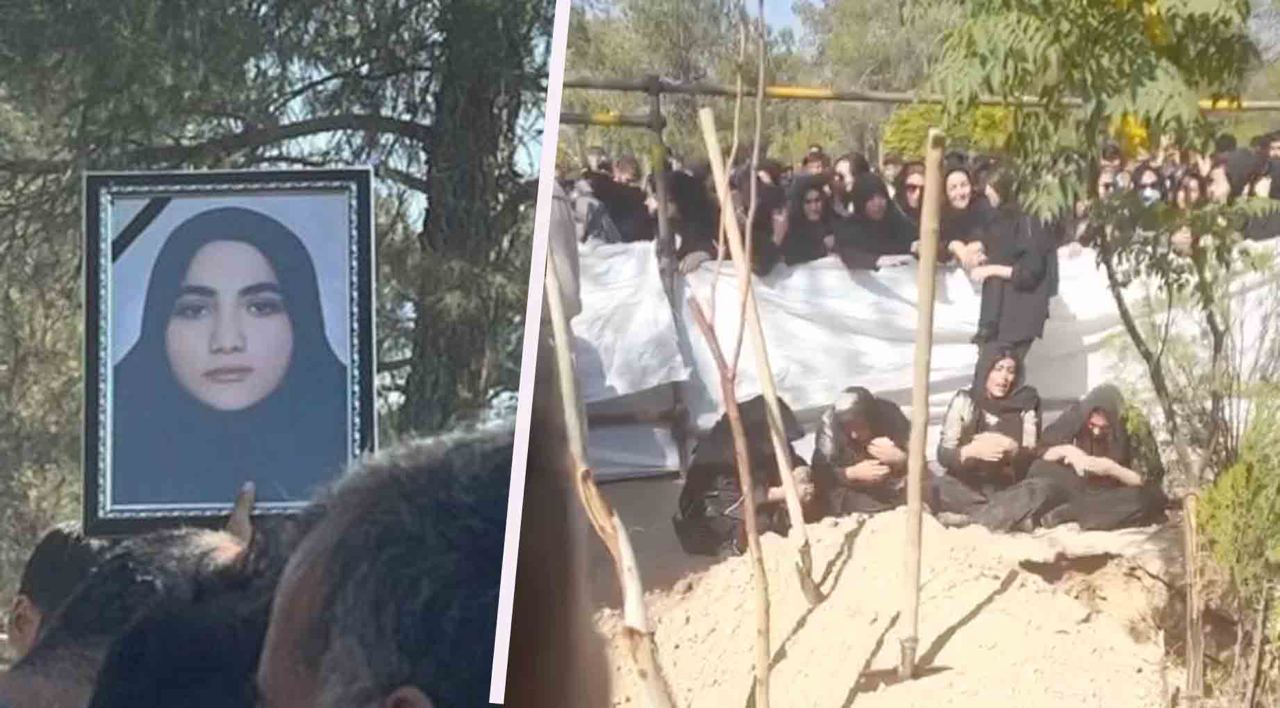
Activists have demanded an independent investigation by the United Nations fact-finding mission on Iran, citing the regime’s threats against victims’ families and state TV’s history of airing hundreds of coerced confessions.
The family was even forced to appear in television interviews to deny the news that their daughter had been assaulted by government agents. Geravand’s parents then appeared in state media footage saying a blood pressure issue, a fall or perhaps both contributed to their daughter’s injury. Security forces have continued to pressure, threaten and impose restrictions on the Geravand family. Initially, the authorities intended to bury Armita in a designated place without a public funeral.
Iranian security forces arrested at least 15 activists and civilians during the funeral of Armita Geravand at the Behesht-e Zahra cemetery in Tehran on 29 October.
Reports of tight state control over Geravand’s funeral indicate officials in Tehran were concerned the event might spur a new wave of unrest.
The burial ceremony took place under tight security and was attended by Geravand’s family, friends, civilians, civil rights activists, and families of those killed by the regime’s forces during last year’s nationwide anti-regime protests.
Among those arrested are Mohammad Geravand, a relative of Armita Geravand; Nasrin Sotoudeh, lawyer and activist; Monireh ArabShahi, the mother of one of the slain protesters; and Masoud Zeinalzadeh, a labour activist.
Armita Geravand, the young innocent girl killed by the morality police, was buried today. Even in grief, her family members faced arrest. The islamic regime’s reign of terror is expanding beyond its borders. The world must isolate this anti-woman regime.pic.twitter.com/sDDURWmSUo
— Masih Alinejad 🏳️ (@AlinejadMasih) October 29, 2023
Nasrin Sotoudeh, an Iranian lawyer, writer, and outspoken human rights champion was taken into custody and is said to have been beaten following Armita’s funeral.
Sotoudeh, who was not wearing a hijab at the funeral service, is said to be being held at the Vozara Detention Center, which is used as a holding center for women accused of failing to wear the mandatory hijab and is where Kurdish young girl Mahsa Amini was taken before her custodial death in September 2022.
Armita Geravand is only the latest young Iranian woman to die at the hands of Iran’s hijab police as part of their relentless campaign to suppress the rights and dignity of Iranian women. Their physical engagement with Geravand on the Tehran metro in early October, captured on video, resulted in a fatal head injury.
Geravand was born on 2 April 2006 in Kermanshah. Her family is from Kuhdasht, Lorestan Province, and has lived in Tehran in recent years.
